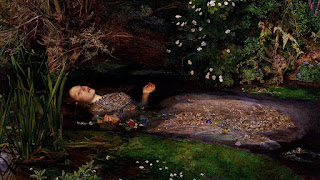POST 2: Three act structure, Vladimir Propp, Genre
3 act structure:
The three act structure is a model used in narrative fiction that divides a story into three parts (acts), often called the Setup, the Confrontation and the Resolution.
The first act is usually used for exposition, to establish the main characters, their relationships and the world they live in. Later in the first act, a dynamic, on-screen incident occurs that confronts the main character (the protagonis), whose attempts to deal with this incident lead to a second and more dramatic situation, known as the first turning point, which (a) signals the end of the first act, (b) ensures life will never be the same again for the protagonist and (c) raises a dramatic question that will be answered in the climax of the film. The dramatic question should be framed in terms of the protagonist's call to action, (Will X recover the diamond? Will Y get the girl? Will Z capture the killer?). This is known as the inciting incident, or catalyst. As an example, the inciting incident in the 1972 film The Godfather is when Vito Corleone is attacked, which occurs approximately 40 minutes into the film.
The second act, also referred to as "rising action", typically depicts the protagonist's attempt to resolve the problem initiated by the first turning point, only to find themselves in ever worsening situations. Part of the reason protagonists seem unable to resolve their problems is because they do not yet have the skills to deal with the forces of antagonis that confront them. They must not only learn new skills but arrive at a higher sense of awareness of who they are and what they are capable of, in order to deal with their predicament, which in turn changes who they are. This is referred to as mcharacter development or a character arc. This cannot be achieved alone and they are usually aided and abetted by mentors and co-protagonists.
The third act features the resolution of the story and its subplots. The climax is the scene or sequence in which the main tensions of the story are brought to their most intense point and the dramatic question answered, leaving the protagonist and other characters with a new sense of who they really are.
Vladimir Propp:
Propp identified a sequence of narrative elements (or 'functions') that typically occurred within Russian fairytale. He identified 31 functions in Russian folklore and fairy tales. These functions occurred in a typical order within each story, with some variation. This type of structural analysis of folklore is the "syntagmatic" manner of assessment (as termed following Lévi-Strauss 1964: 312). Another example of syntagmatic analysis is the Hero's journey. This focus on the events of a story and the order in which they occur is in contrast to another form of analysis, "paradigmatic" (cf. Sebag 1963:75). That describes instead the underlying pattern (usually based upon a priori binary principle of opposition) of the folkloric text. For paradigmatic analysis, elements of the plot may be taken out of their "given" chronological order within the story and regrouped in various analytic schemes.
Genre:
Genre is most popularly known as a category of literature, music, or other forms of art or entertainment, whether written or spoken, audio or visual, based on some set of stylistic criteria, yet genres can be aesthetic, rhetorical, communicative, or functional


Comments
Post a Comment